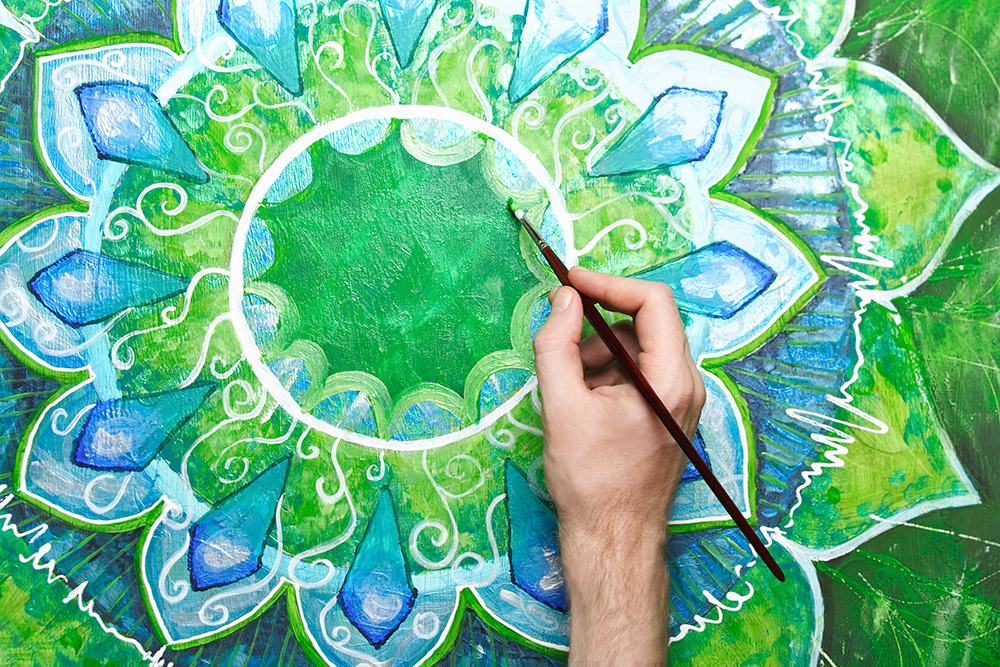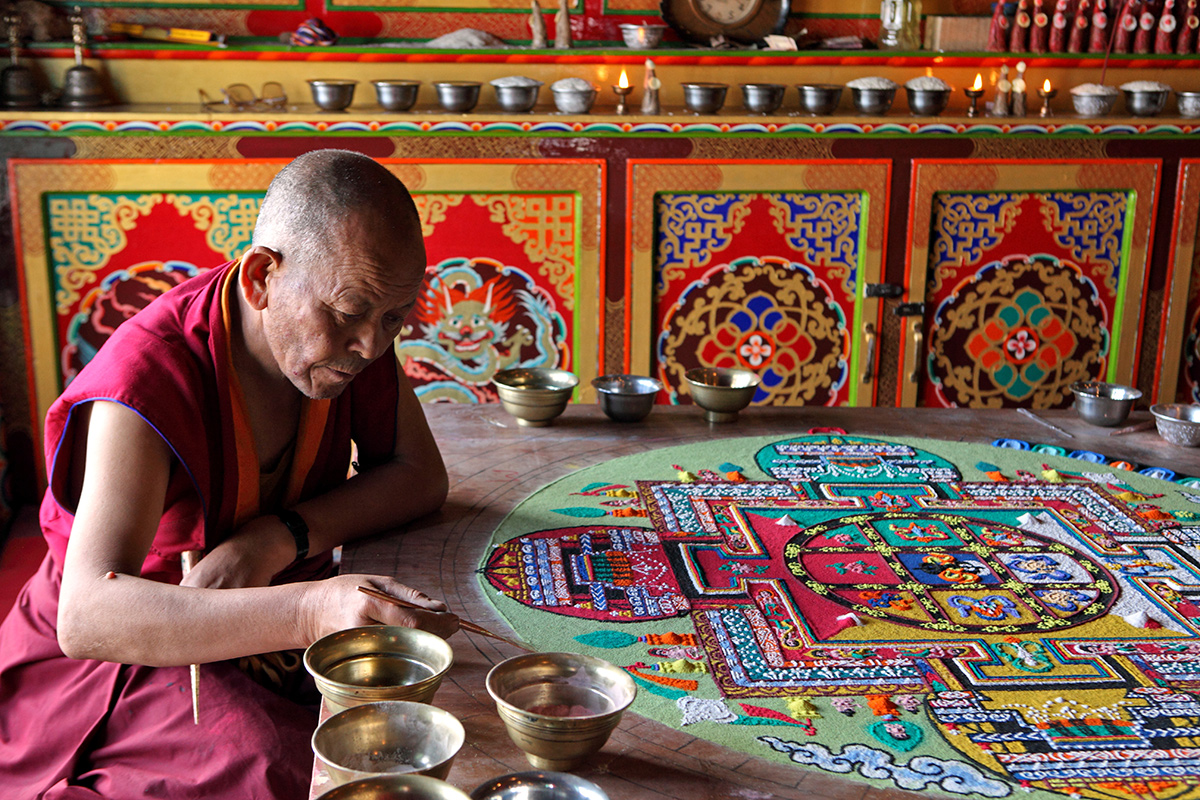The mandala may have a simple translation from Sanskrit, but the real meaning behind this symbol signifies much more than just a “circle.” Mandalas come in various shapes and sizes, each representing wholeness in all aspects of life from our celestial beginnings to our social relationships between friends, families, and the communities we are surrounded by in our day to day lives.
For some people the idea of the mandala is new, especially to those who practice Western religions, but to those who have long followed Eastern religious beliefs, the mandala is a symbol that has been woven into the fabric of their religions dating far back into history.

Making a mandala is no easy feat. While there are many different kinds, which hold different meanings, it is often considered to be a spiritual process that can take days or even weeks to create and perfect. On occasion, groups will come together to work in harmony with one another to create this symbol in a process that unifies them, while allowing each individual to express his or herself within a larger context.
Although not always made under the name “mandala”, the symbol has been used for centuries and across many different cultures, and religions. A Christian nun in the 12th century, Hildegard von Bingen, was known to have created many mandalas as a way to show her experiences and beliefs. On the other side of the world, Native Americans created medicine wheels and sand mandalas. As part of the religious Navajo practices, the sand mandalas would be kept anywhere from five to nine days before being erased as a sign of our limited time on earth. The mandalas created were typically anywhere from 3 to 15 feet in diameter.
Meanwhile in Asia, the taoist symbol of the yin-yang represents not only the balance of opposites, but their interdependence as well. And in Tibet, the mandala is highly intricate to express religious beliefs and is used in daily meditation as a symbol to focus their energy on. In Tibetan practice, mandalas are made by colorful sand and semiprecious stones as a way of showing that our time here on earth is not permanent much like in the practices of the Navajo.
When using a mandala, one should choose one that is visually appealing to them in order to draw in all of their attention and energy and let all of the troubles from daily life melt away. Not everyone will experience the same things while meditating with mandalas but the end results are the same. No matter what religion you practice, or where in the world you live, you should come away from this experience with a feeling of relaxation and a renewed focus on your goals.













